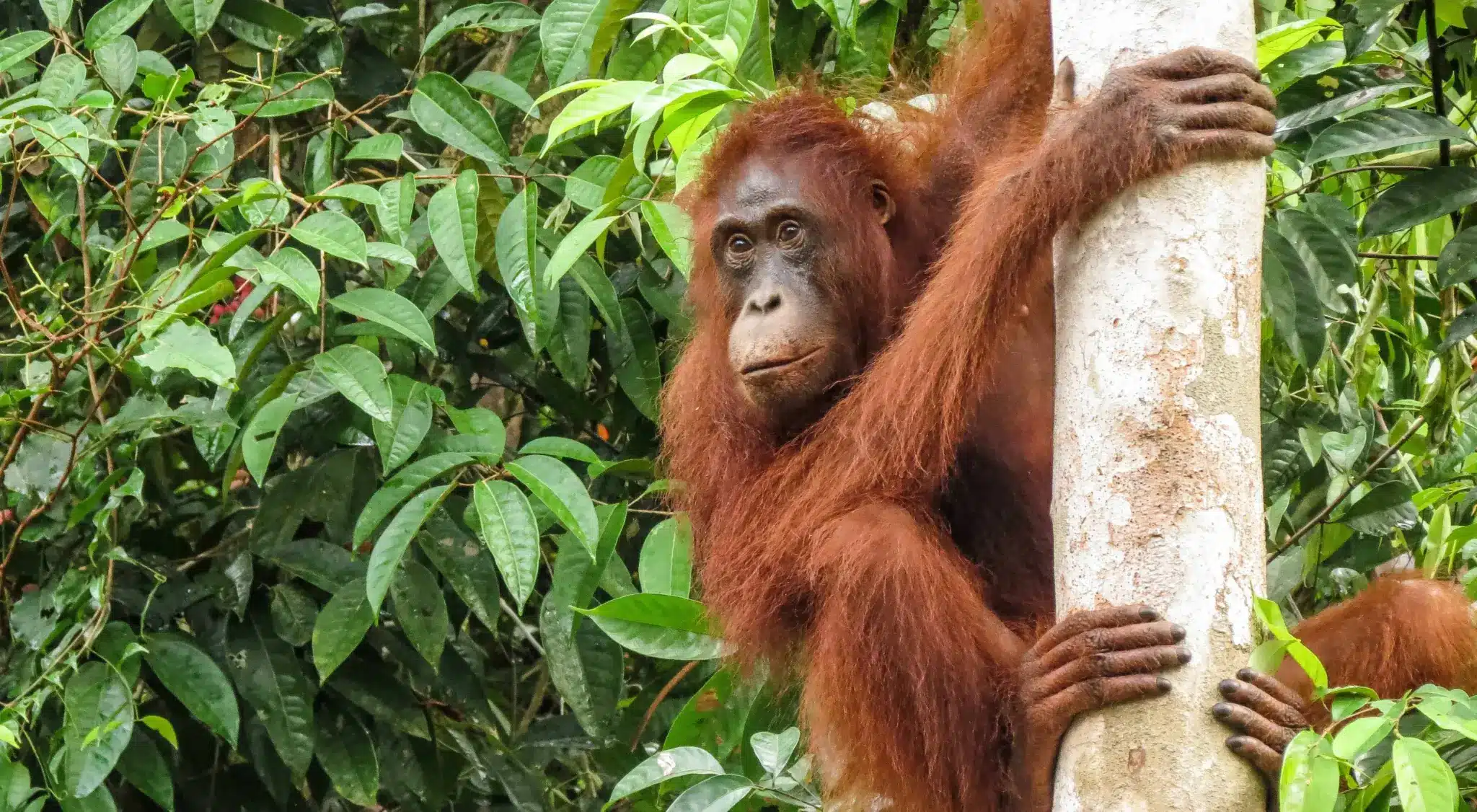About Orangutans:
- Orangutans, widely recognised for their distinctive red fur, are considered to be the largest tree-dwelling mammals. They are primarily arboreal, spending over 90% of their waking hours in trees.
- Orangutans are highly intelligent and share 96.4% of their genes with humans, making their conservation even more significant.
- Distribution: They inhabit the Indonesian island of Sumatra and the Malaysian and Indonesian parts of Borneo.
- Their habitat spans from lowland peat swamp forests to high-altitude mountainous forests, reaching nearly 1.6 kilometres above sea level.
- Species: There are three species of orangutans: Bornean, Sumatran, and Tapanuli.
- Characteristics:
- Size: Adult males are generally about twice the size of females, standing up to 1.3 meters tall and weighing up to 130 kg in the wild.
- Appearance: They are covered in long, sparse orange or reddish hair. They possess arms significantly longer than their legs and have grasping hands and feet with long, curved fingers and toes. Mature males develop prominent cheek pads, a unique feature among primates.
- Lifespan: Orangutans can live up to 50 years in the wild.
- Diet: They are primarily daytime feeders with a diet mainly consisting of fruit and leaves such as lychees and figs. They also consume nuts, bark, insects, and occasionally bird eggs.
- Social structure: Orangutans are known for their semi-solitary behaviour. Though they are the most solitary among great apes, they do show social tolerance during periods of high fruit availability, coming together in groups known as parties.
Conservation Status: All three species of orangutans are listed as ‘Critically Endangered’ on the IUCN Red List.
Q1. What is the IUCN status?
The IUCN status refers to the conservation status of species as assessed by the International Union for Conservation of Nature (IUCN) through its Red List of Threatened Species. This list categorises species into several statuses, including Extinct (EX), Extinct in the Wild (EW), Critically Endangered (CR), Endangered (EN), Vulnerable (VU), Near Threatened (NT), Least Concern (LC), Data Deficient (DD) and Not Evaluated (NE).
Source: Why has Malaysia tweaked its ‘Orangutan diplomacy’? | Explained News – The Indian Express
Last updated on June, 2025
→ UPSC Notification 2025 was released on 22nd January 2025.
→ UPSC Prelims Result 2025 is out now for the CSE held on 25 May 2025.
→ UPSC Prelims Question Paper 2025 and Unofficial Prelims Answer Key 2025 are available now.
→ UPSC Calendar 2026 is released on 15th May, 2025.
→ The UPSC Vacancy 2025 were released 1129, out of which 979 were for UPSC CSE and remaining 150 are for UPSC IFoS.
→ UPSC Mains 2025 will be conducted on 22nd August 2025.
→ UPSC Prelims 2026 will be conducted on 24th May, 2026 & UPSC Mains 2026 will be conducted on 21st August 2026.
→ The UPSC Selection Process is of 3 stages-Prelims, Mains and Interview.
→ UPSC Result 2024 is released with latest UPSC Marksheet 2024. Check Now!
→ UPSC Toppers List 2024 is released now. Shakti Dubey is UPSC AIR 1 2024 Topper.
→ Also check Best IAS Coaching in Delhi
























